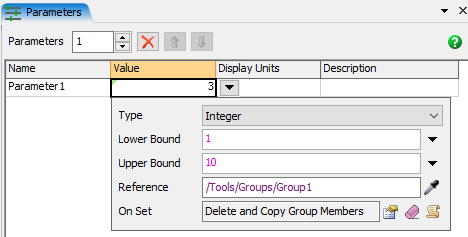Hello,
In my model, I attempt to perform a financial analysis (Financial Analysis of Machines) on the profitability of different numbers of machines. For this purpose, I created a financial analysis chart and a parameter table. The chart financially analyses machines collected from the value set in the table.
An error occurred in the chart of the financial analysis. The value in the table (pictured) sets to be 3, whereas nothing changes in the chart according to dependency.
Conversely, it is not the case in the "Utilisation Analysis of Machines" state chart. A correspondence between this chart and the table is visible.
More details about the model are obtainable in the attached file.
Thank you for your time and review
